Overview
Objective
The objective of this project is to develop a web and a mobile (responsive) application which helps Georgia Tech students find classes according to their schedule. Due to the nature and the purpose of the application, the aim is to develop a clean, easy-to-use interface with minimal but useful interactions so that it brings a good user experience.
With implementing the table of daily and weekly class schedule with their respective information, I decided to plot them in the map so that the students have a better sense of where their classes are located. Furthermore, in addition to adding information such as class time, location, instructor name, I decided to add a direction button so that the students are able to navigate to their classes in a single click.
Approach
The motivation behind this project was due to discovering the gap between the two of the currently existing applications of GT-RNOC where I work as a Graduate Research Assistant. During the first term, I had discovered that the two applications: GT Schedule and GT Places were not being used. After carefully thinking about my vision and how to use these existing (non-used) applications to come up with my project, I decided to pitch my idea to my lab director, Matthew Sanders who then agreed to let me proceed with my idea.
With hard work, me and my team was able to set up a meeting with the Director of International Education (OIE), Marisa Atencio and other deans from the Graduate Studies and the Orientation Office to further discuss about showcasing the application to the new student orientation sessions.
My Role
With only a total of two people developing the application, I was in charge of doing all the UI Design and Front-end Development which were achievable through careful research and planning. Between me and my partner, Yeonjoon Choi, we ideated and tackled on the project together as a team.
Process
Problem Domain
When the new students come to Georgia Tech, one of the prominent problem is that many of them have a tough time finding their classrooms. Although Georgia Tech campus is smaller than may of the other universities, navigating to classes for the incoming students often lead to frustrations. Even for current students who has to discover new buildings, new classrooms and new ways to get from building to building every term, they experience a lot of stress during the first few weeks of school. Given that the first few weeks of the new environment impacts a lot in how the students do well over the course of the term (according to some of the preliminary research), it is crucial that the incoming students are comfortable finding their classrooms in a new environment.
Currently, when the new students come to Georgia Tech, the resources that they are given are either online or physical copies of the map of Georgia Tech. Although there are other useful information from a variety of resources that help the new students to adjust to the community and the wayfinding across Georgia Tech, there isn't a solution that allows them to directly find the classrooms. Therefore, it is very easy to spot new students asking others where specific buildings and classrooms are located. This forces the new students to wake up early or even cause delay in getting to classes. In extreme cases, some of the students end up dropping the classes due to not being able to make it to their first classes.
Existing Applications
GT-RNOC (stands for Georgia Tech - Research Network Operations Center) runs a website (container) which lists many useful applications that has been developed for the past few years (http://m.gatech.edu). Any Georgia Tech students / staffs are able to login to their Georgia Tech account (called Buzzport) and utilize the applications to their advantage. For example, an application called, "GT Buses" allows the students to find the bus routes all across the Georgia Tech campus in addition to knowing where the stops are located, where each of the different buses are headed to and whenabouts the buses will arrive.
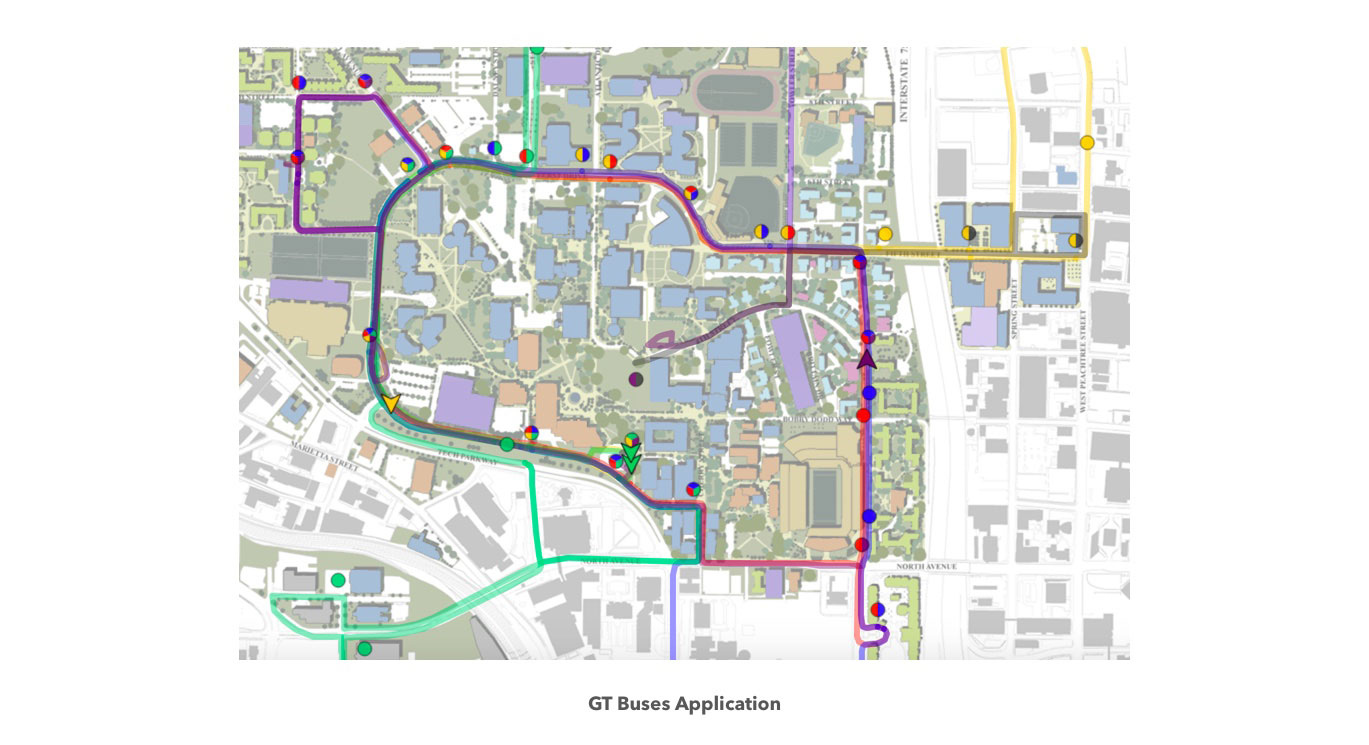
Just like GT Buses, there are applications that help not only the new students but also the current students in various domains. Although some of the applications are outdated and need improvements on the UI/UX as well as the API documentation, I found that two of the current applications were able to be used for my project which are: GT Places and GT Schedule.

GT Places allow the user to find all the buildings at Georgia Tech and returns the values such as images, locations, phone number etc while GT Schedule simply provides the daily and weekly schedule for the students (data can only be fetched when the user logs into Buzzport - which is Georgia Tech's login system).
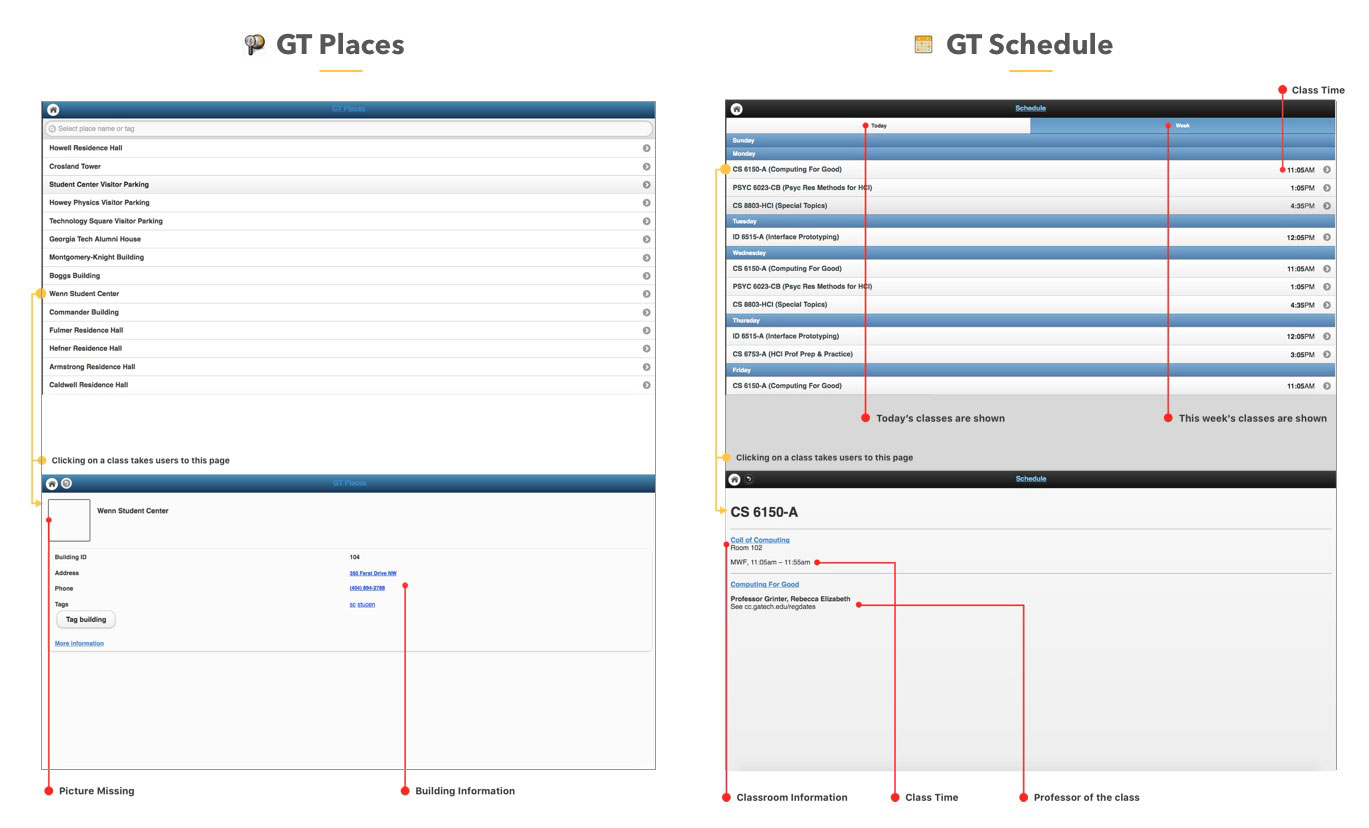
However, as can be seen from above, the purpose for each of the applications lacks a lot of value which I decided to tackle in order to make a brand new application for my project. Therefore, I decided to analyze the two applications in more detail in addition to acquiring feedback and responses from doing some preliminary research (survey, interviews) about these existing applications.
Some of the feedback that I got as well as my own thoughts were:
Why would I use GT Schedule if...
• I can view my class schedule in other applications already?
• I can take screenshots of class schedule from other applications?
• I would eventually have to type in the address on Google Maps?
Why would I use GT Places if...
• I can look up the buildings on Google Map for directions?
• I can look up the building information (phone number, address) on Google?
Ideation
Upon discovering that I will be able to fully utilize the GT Schedule API and GT Places API for my project, I proceeded into brainstorming and ideating some of the ideas. Some of the valuable insight I could get from doing this was that there were a lot of existing assets that weren't being used that could potentially help me with my project and this was a very good discovery in terms of sustainability.
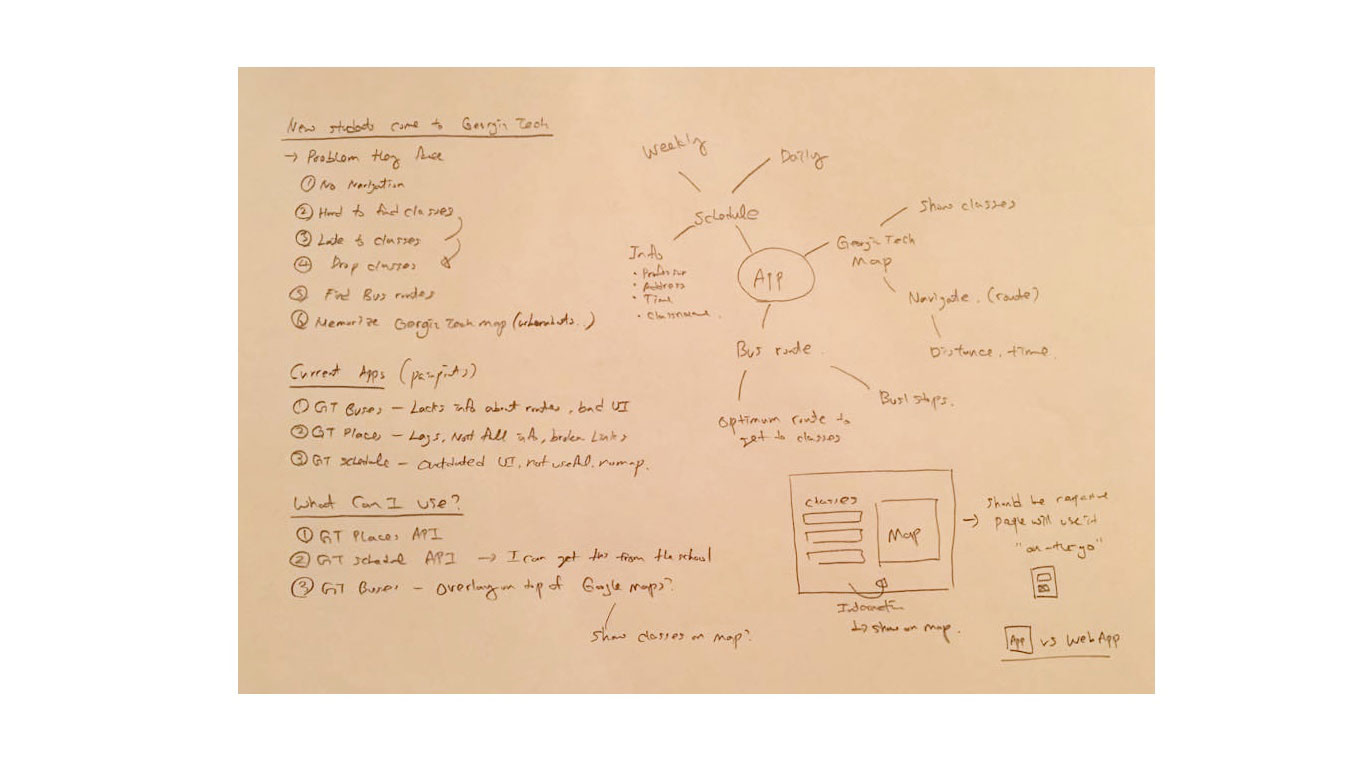
Storyboard

Wireframe
With constantly engaging in meetings with the lab director and my partner, Yeonjoon Choi, we came to a stage of doing some wireframing for the application. We thought there was an advantage for our app to be a responsive web application so that the students don't have to download the app but just have to login with their Georgia Tech credential and access our application.
We focused on designing the application as simple as possible given that the students should be able to interact with the application very easily. Moreover, due to the nature of the app being an "on-the-go" type of app, meaning that they will more likely to use the application to navigate to their classes with their mobile phones, we had to take into consideration of the mobile view also.
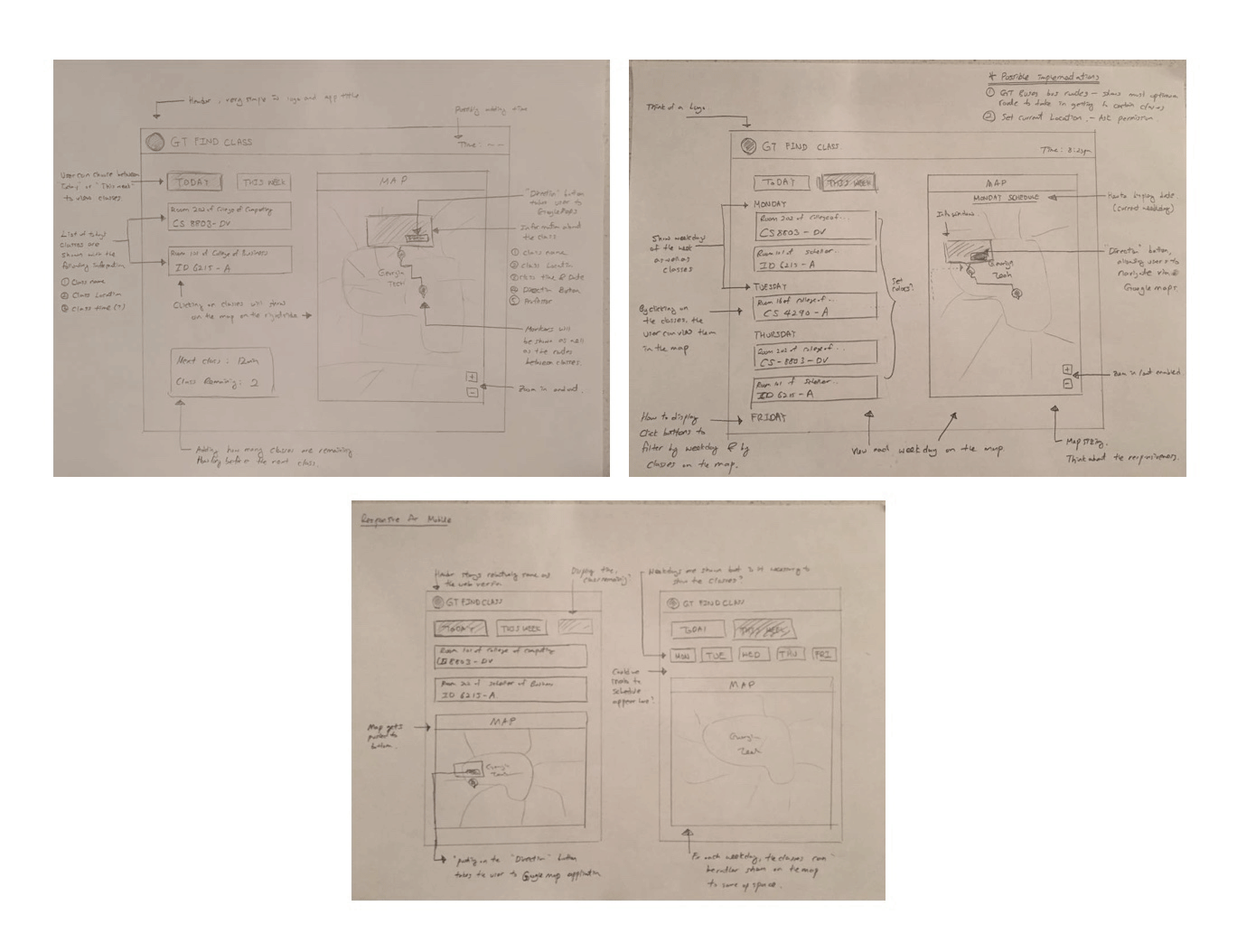
Design & Development
With Yeonjoon working mostly on the Back-end Development, I took charge in designing the UI of the application for both web and mobile. Since I was already comfortable with working with CSS, I also worked on the Front-end Development as well and Yeonjoon also helped out on this. Since we were actually overriding the GT Schedule application which was written in jQuery Mobile UI, I had to override them with custom CSS.
After the styling was finished, we overlayed the Google Map with the GT Buses application so that later when we implement bus routes for classes, we are able to work on that part of the application as well. Once the design was finished, the development phase was slowely taking its part and everyday, we worked together in making the application come to life.
Week View (Web)
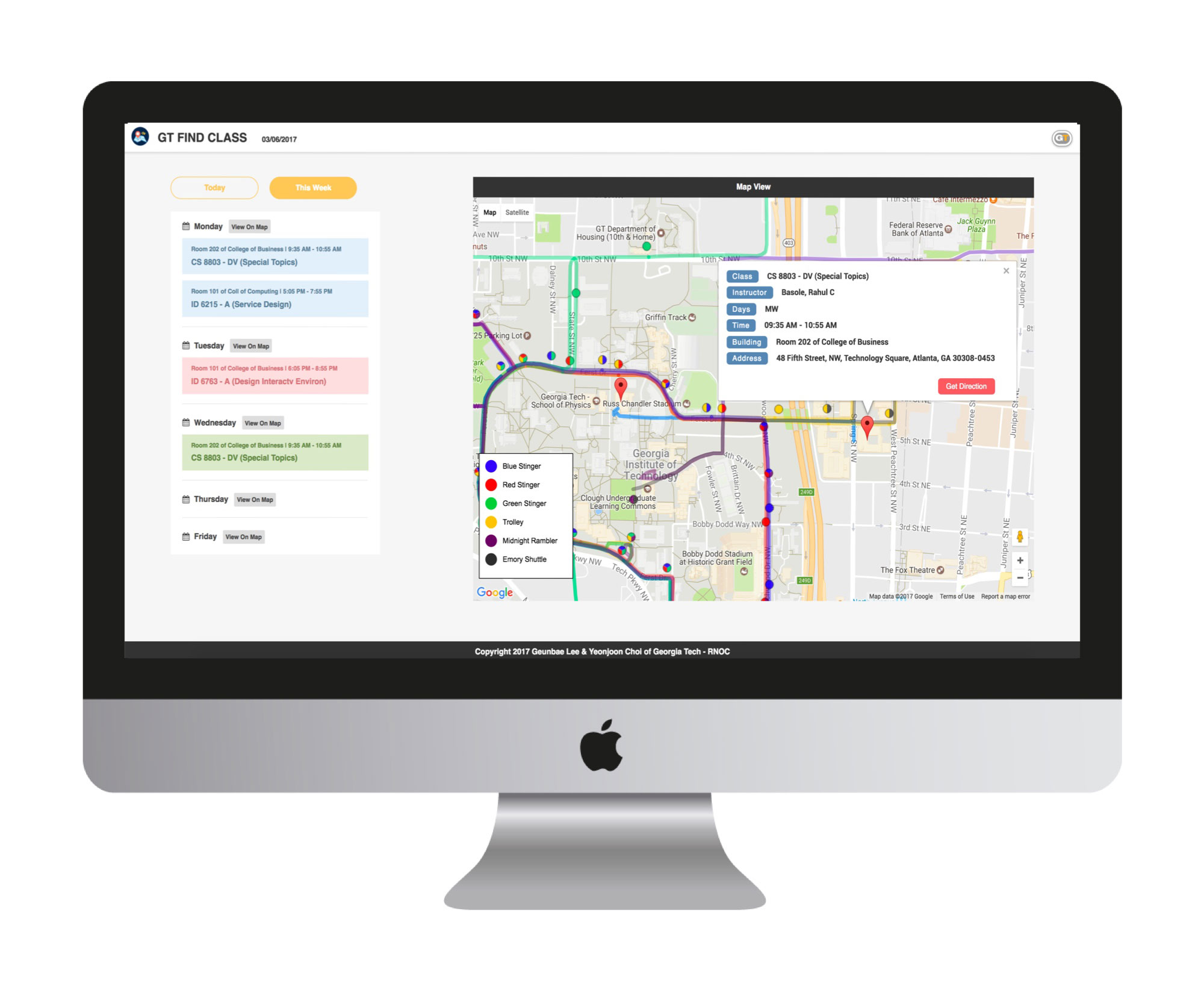
Today View (Web)
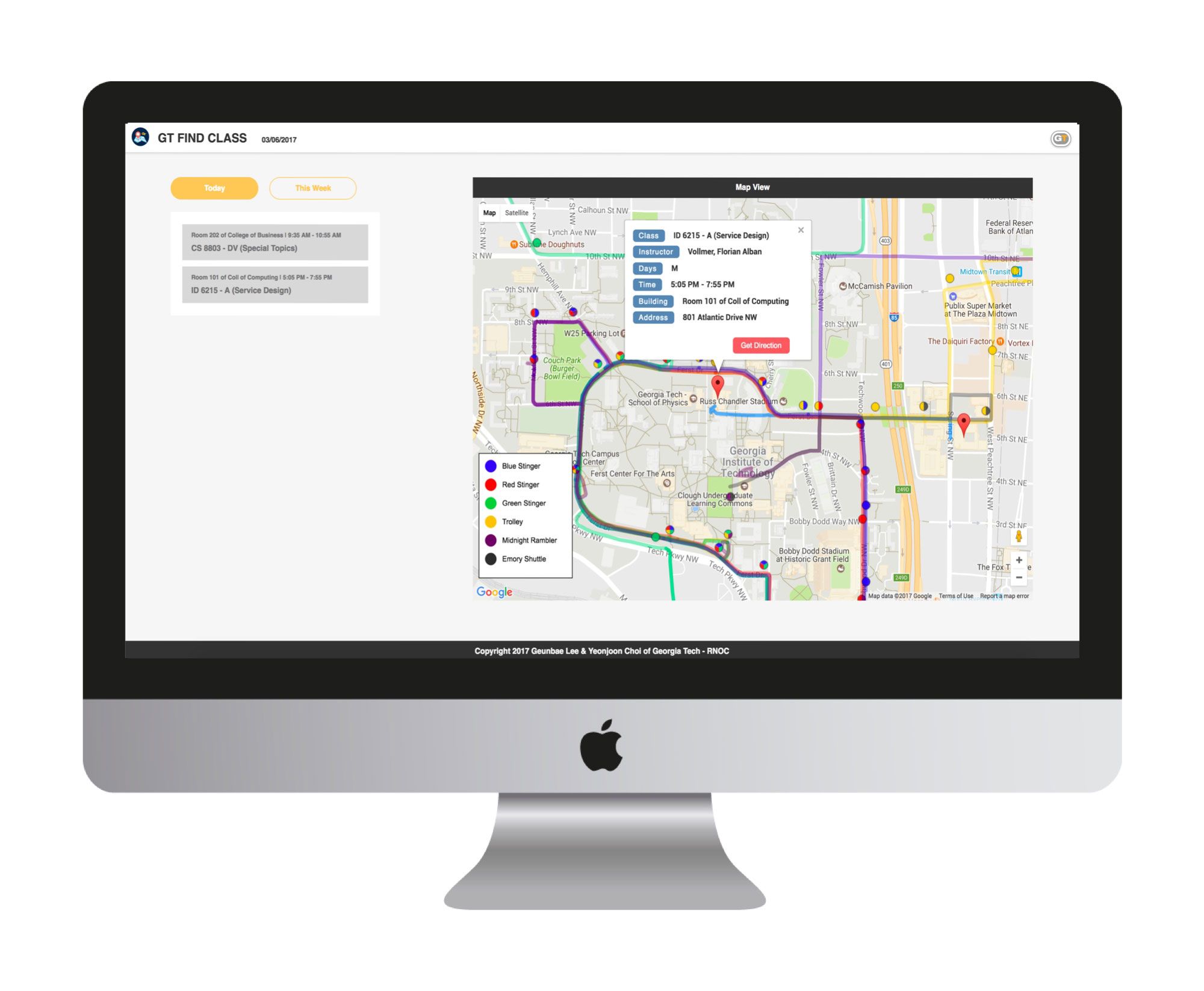
Mobile View
